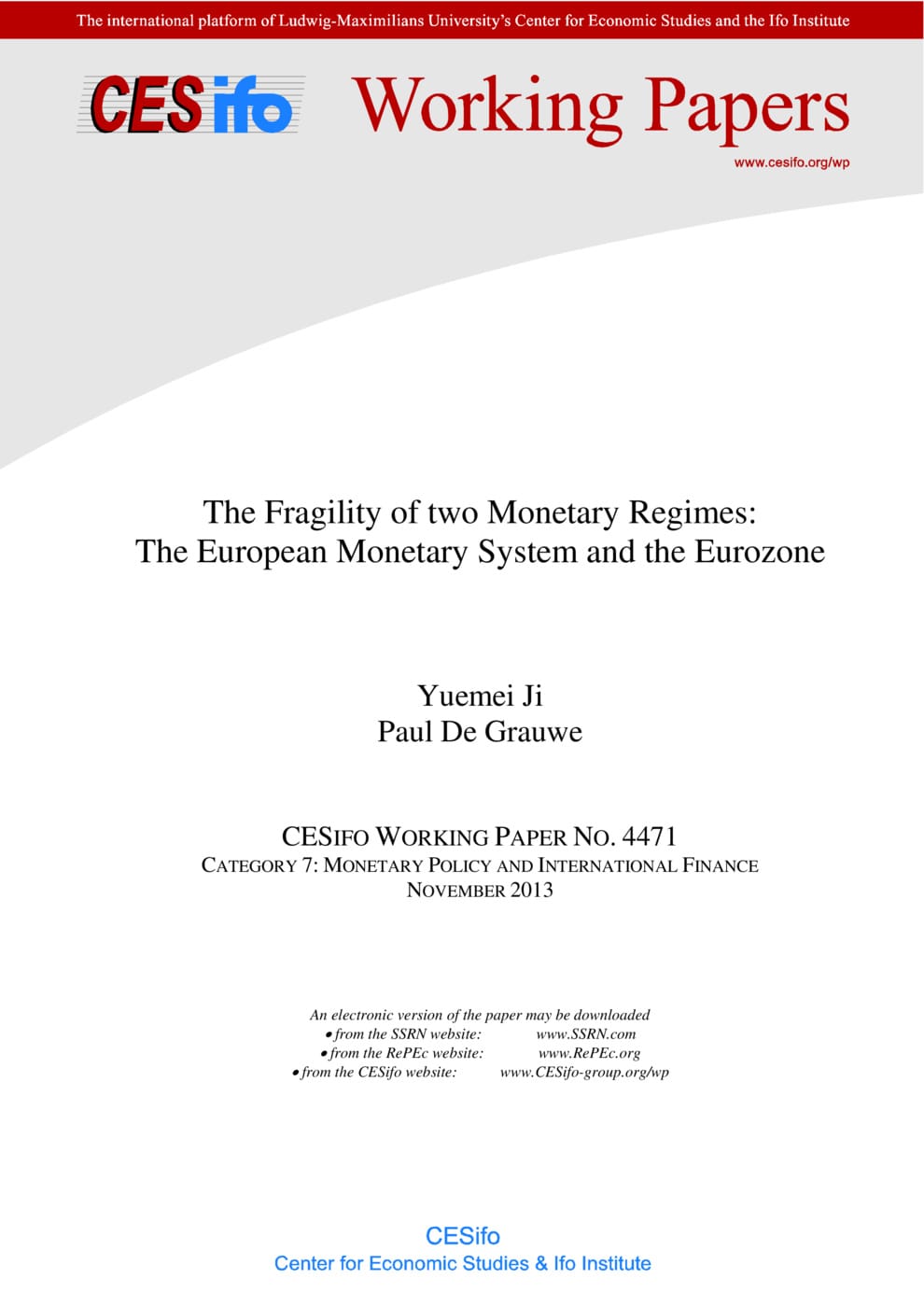The Fragility of two Monetary Regimes: The European Monetary System and the Eurozone
CESifo, Munich, 2013
CESifo Working Paper No. 4471

We analyze the similarities and the differences in the fragility of the European Monetary system (EMS) and the Eurozone. We test the hypothesis that in the EMS the fragility arose from the absence of a credible lender of last resort in the foreign exchange markets while in the Eurozone it was the absence of a lender of last resort in the long-term government bond markets that caused the fragility. We conclude that in the EMS the national central banks were weak and fragile, and the national governments were insulated from this weakness by the fact that they kept their own national currencies. In the Eurozone the roles were reversed. The national central banks that became part of the Eurosystem were strengthened. This came at a huge price, i.e. the fragilization of the national governments that could be brought down by the whims of fear and frenzy in financial markets.
Monetary Policy and International Finance
Fiscal Policy, Macroeconomics and Growth